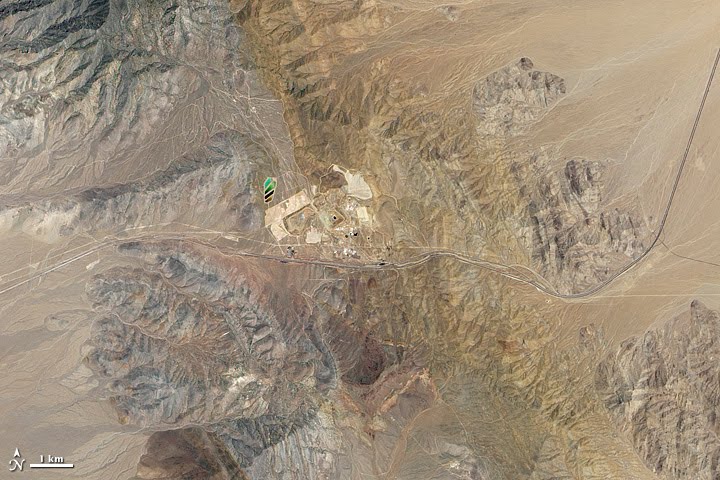


California’s Mountain Pass Mine started as a disappointment. Prospectors looking for uranium eyed the site with high hopes, but the ore samples that they sent to the U.S. Geological Survey proved poor in the radioactive metal. The site turned out to be rich, however, in rare-earth elements. Valued today for their utility in high-tech manufacturing, rare-earths have made Mountain Pass attractive to miners once more.
The Advanced Land Imager (ALI) on NASA’s Earth Observing-1 (EO-1) satellite captured this image on May 28, 2011. The mine is a network of buildings, terraced land, and roads situated in a mountain range within the Mojave Desert. The bright green areas in the northwest are settling ponds—reservoirs where mining wastewater is held until the suspended particles slowly precipitate out to the bottom.
It's not clear why rare-earth metals collected in this location. Underlying the mine are ancient rock layers formed between 1.6 and 1.8 billion years ago. Some of those rocks were exposed to enough heat and pressure to fundamentally change their structure. About 1.4 billion years ago, the intrusion of volcanic material from beneath those layers pushed the metals from their source closer to Earth's surface.
Within those ancient rocks are rare-earth elements now valued in applications such as hybrid automobiles and wind turbines. Rare-earths are actually not that rare in Earth’s crust, but they are generally spread over wide areas. Sites such as the Mountain Pass Mine are valuable because they contain sufficient concentrations to be mined profitably.
The modern topography of the region may have had a minor role in the placement of the rare earths. The collision of the Pacific and North American tectonic plates deformed rock layers in this region, pushing up mountains. The forces raising the mountains may have helped lift the rare-earth rich layers to the surface.
Note: Due to the angle of sunlight, this image may cause an optical illusion known as relief inversion.
NASA Earth Observatory image created by Jesse Allen and Robert Simmon, using EO-1 ALI data provided courtesy of the NASA EO-1 team. Caption by Michon Scott with information from David Jessey, Cal Poly Pomona.